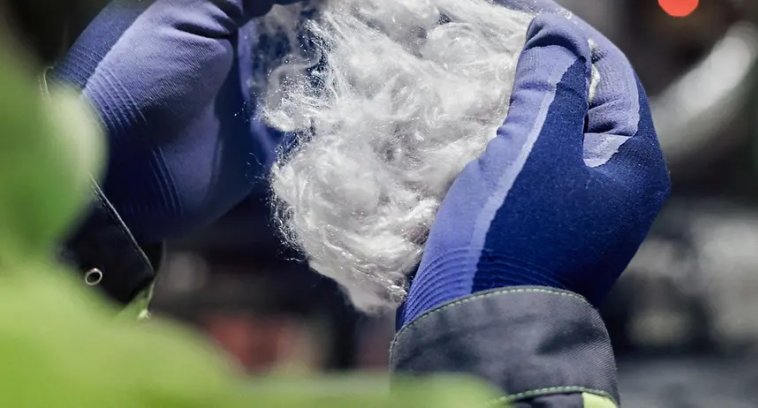
Wetlace CP pilot line in France
New plans for cellulosic fibres and CO2 materials to be integrated into Finnish firm’s pulp producing operations.

19th June 2024
Innovation in Textiles
|
Finland
Finnish forest industry company Metsä Group has entered into a cooperation with Andritz to explore the integration of carbon capture into a bioproduct mill.
The two companies are in addition already collaborating on a pre-study for the first possible commercial mill producing Kuura – a new type of textile fibre made from Finnish wood.
The integration of carbon capture technology into the Metsä mill would be the first of its kind worldwide and not only enable the removal of CO2 from the flue gas, but also create a basis for future utilisation of this side stream in new materials.
A carbon capture module based on the proven Andritz amine process with a capacity of 600,000 tons per year will be developed as the basis for a modular concept that aims to eventually capture all the CO2 – about 4.2 million tons per year – from the flue gases of the bioproduct mill.
Metsä’s bioproduct mills focus on the production of pulp from wood and aim to maximise wood utilisation by also producing biochemicals and bioenergy from the side streams. The process concept study will investigate ways to utilise all the waste heat side streams in order to power the carbon capture process.
This initiative has the potential to create an additional business for Metsä from the captured CO2, which is generated from biomass combustion and is therefore biogenic. Integrating CO2 capture with green hydrogen production would open up an opportunity for the sustainable production of raw materials for the chemical industry and renewable fuels.
“Our goal at Metsä Group is to process northern wood into increasingly valuable products,” says Sari Pajari-Sederholm, Metsä Group’s EVP of strategy. “If implemented, carbon dioxide capture would open up opportunities for a significant new chemical industry in Finland and boost the Finnish hydrogen economy.”
Kuura
The primary objectives of the Kuura textile fibre collaboration are meanwhile to develop a pulp pre-treatment method and smart ways to integrate textile fibre production into the various departments of a bioproduct mill.
The pre-study is the first planning stage for a potential commercial mill project to process softwood pulp into a new type of man-made cellulosic fibre (MMCF). The Kuura concept produces a sustainable, high value-added product without the use of fossil fuels.
Kuura fibre and its production process are currently being developed in a demo plant at Metsä Group’s Äänekoski site in Finland. Andritz supplied key process areas, including the fibre line for the Äänekoski demo plant.
“We’ve systematically developed Kuura fibre to meet the growing demand for more sustainable textile fibres,” says Metsä Spring CEO Niklas von Weymarn. “The first Kuura mill would be constructed next to one of our modern bioproduct mills, which would allow us to use renewable energy generated at the neighboring mill and take advantage of several closed cycles. In addition, all pulp, the main raw material, would come from nearby certified Finnish forests.”
The pre-study, which began this April, is expected to take a year to complete, after which the mill planning will proceed to a more detailed pre-engineering stage. Once operational, the aim is for the mill to produce approximately 100,000 tons of Kuura fibre per year and employ about 250 people.

Business intelligence for the fibre, textiles and apparel industries: technologies, innovations, markets, investments, trade policy, sourcing, strategy...
Find out more